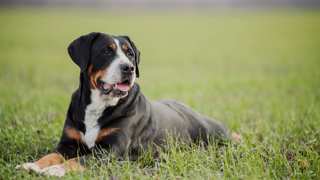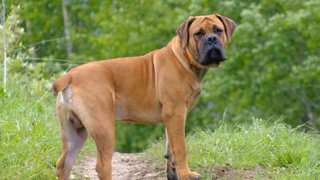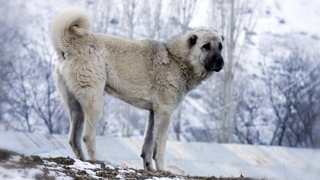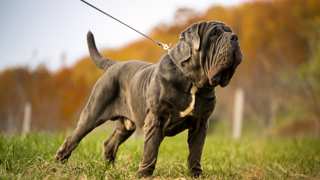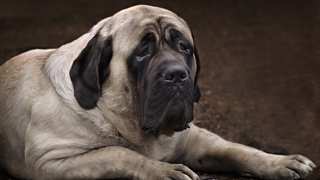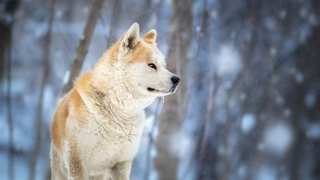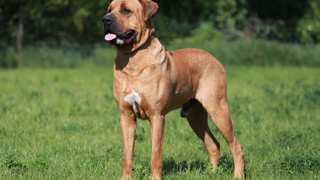The typical Bullmastiff doesn't need a lot of exercise. These dogs, which were originally used to fend off poachers, were not like herding or sporting dogs. They would usually lie in wait and if they were needed, would spring into action using their massive bulk to "arrest" someone until the master arrived. Unless you want a muscular Bullmastiff, these dogs are prone to lying about most the day until their exercise. Daily exercise doesn't need to be much more than a brisk walk of about 20 to 30 minutes, provided your Bullmastiff is kept on a proper diet.
There is such a thing as too little exercise, however, and even for Bullmastiffs. A diet high in protein or fat can easily conspire to keep these dogs dormant, and if you don't take the time to at least walk them once a day, they will get fat — and quickly. These are big dogs that need just the right amount of proper exercise. They also need to be properly restrained if not allowed to run and play freely in a very secure area. If a dog park is your preferred exercise area, you need to be very vigilant due to the territorial nature of these dogs. While a harness might be considered, it is best to use a very strong collar leash as this type allows for far better control.
Depending on the type of Bullmastiff you ultimately desire, there are many types of exercise you can do. It's best to think ahead and make sure you don't start out too exuberantly. Here are some exercises to consider:
- Walking: This classic and timeless activity is the best physical exercise for these dogs. Once a day, every day, for about 20 to 30 minutes is practically perfect.
- Agility toys: Most people don't associate these big, burly dogs with mind puzzles, but Bullmastiffs are highly intelligent dogs who will greatly appreciate food puzzles and other such games.
- Sled-pulling: If you want a muscular Bullmastiff, all you need is a strong rope, a sled of some kind, and a bunch of bricks or other weight to stack on it. Put some doggie snacks on one side of the yard and carefully attach that weight-laden sled to him on the other side. Start with a few pounds and build up a few pounds every week.
- Tussle rope on a tree: If you have a strong tree in the back yard, hang a burly bit of rope on the strongest, lowest branch. Put a big knot at the end and let it hang about a foot out of reach.
If your Bull Mastiff is given the idea of strenuous exercise when he's a puppy and you don't maintain that high level, it could lead to anxiety later in life. Use treats sparingly so that he doesn't expect a snack every time you take a short stroll. Keep a basic schedule, as being too exact in the beginning (for instance, taking a walk every day at 9 a.m. on the dot) can lead to expectations that, if unmet, can cause anxiety. Also be sure to keep control at all times, such as training him that a leash and open door do not mean he can take off.

